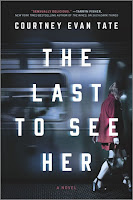Title: Total Meditation: Practices in Living the Awakened Life
Author: Deepak Chopra, MD
Publication Information: Harmony. 2020. 336 pages.
ISBN: 1984825313 / 978-1984825315
Book Source: I received this book through NetGalley free of cost in exchange for an honest review.
Opening Sentence: "If someone asked me what to expect from meditation, I'd reply, 'Anything and everything.'"
Favorite Quote: "I am present in everything I see ... I am present in everything I hear ... I am present in everything I touch ... I am present in everything I taste ... I am present in everything I smell ... I am present in everything I think ... I am present everywhere."
I love the concepts of this book. Our entire life is a meditation. Out mind and body are indivisible; together, we are a united whole. The achievement of consciousness and presence is a process. I love the approach proposed. "We should take seriously a famous quote of Einstein's: 'There are only two ways to live. One is as though nothing is a miracle. The other is as though everything is a miracle.' The words are inspiring, but how do you actually live a life with the awareness the everything is a miracle?"
The bulk of the book focuses on the first part, providing definitions and descriptions of words often heard - awareness, through, meditation, mindfulness, self-inquiry, reflection, contemplation, concentration, prayer, quiet mind, controlled breathing, resistance and so much more. This section of the book quotes Bill Bryson's The Body: A Guide for Occupants in a discussion of homeostasis. The entire descriptive dialogue is interesting but perhaps a bit academic and a bit repetitive. It is very much focused on the "what" and "why" of total meditation. Some techniques such as breathing are presented but the focus is descriptive. I feel like one reading is not enough to grasp everything being said.
The last third of the book is titled Making the Practice Richer. To me, these sections are really the "practice" and the "how."
My favorite section of the book is the one titled "Feeling the Miracle: 10 Simple Exercises." It builds upon the concept of the Einstein quote above. The ten exercises point out ten things that we do not often give conscious thought to. The point made is that if we did, they would truly be miraculous. This starts to get to the "how" and I look forward to incorporating some of these considerations in my own life. The section ends with the crucial reminder that "by any measure, just to be here is miraculous."
The next section introduces a seven day course. This section packs a lot of information that I think will require multiple readings to implement. Nevertheless, it provides a structure that can be followed.
The final section of this component covers 52 Sanskrit mantras, one for each week of the year. The use of Sanskrit mantras ties this book to an ideology and a belief system in a way that the rest of the book does not. The remainder of the book discusses some science and some philosophy but not a faith based ideology. Whether or not that ideology works is dependent on the individual reader.
The epilogue pulls the book together into the main concept of presence, awareness, and awakening. The ideas of the book are not new. The author's introduction itself begins with the statement that the practice of meditation dates back thousands of years. So, what does a new book introduce in this genre? It is at times a repackaging or reimagining of the ideas. It is at times that I, as a reader, need a reminder of the ideas. It is this that gives book in this genre their merit.
I enjoy the book at this point in my own journey where the reentering and the rebalancing is needed. I need the reminder to shift and maintain focus. This book does exactly that.
Please share your thoughts and leave a comment. I would love to "talk" to you.













